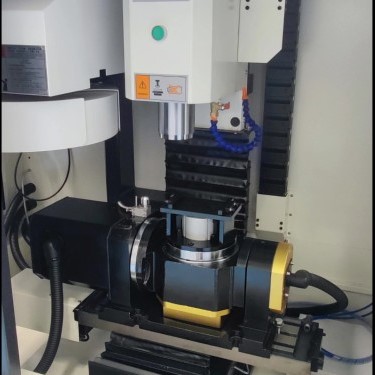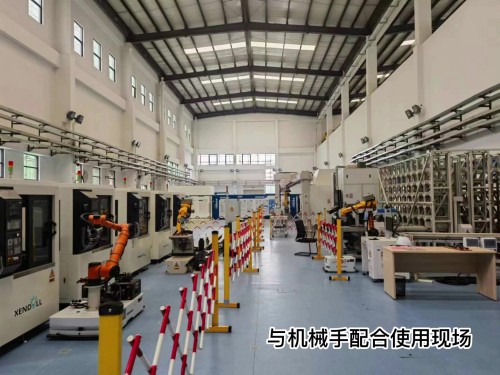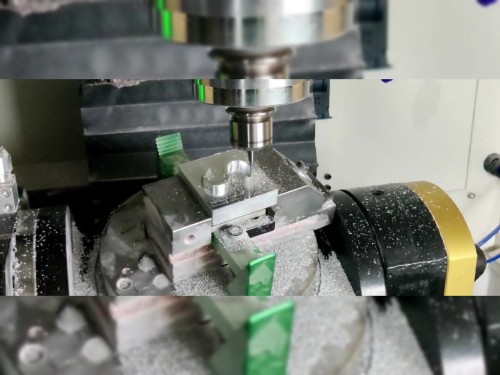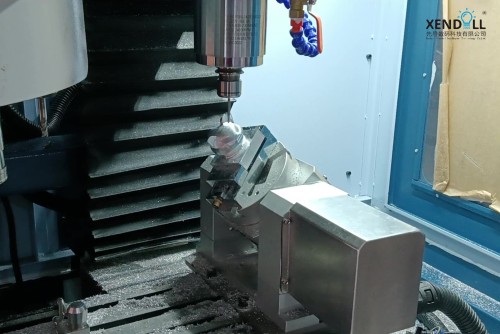Blog
Xendoll has 22 years of experience in the production of small machine tools. We will help you choose the suitable machine and share our experience in CNC machining with you.
 Nov 20, 2024
Nov 20, 2024
 Xendoll
Xendoll
 898
898
With the continuous advancement of technology and manufacturing techniques, CNC (Computer Numerical Control) machines have moved from traditional industrial production lines into Maker Spaces, becoming a core tool for innovative manufacturing. In Maker Spaces, the introduction of 5-axis CNC machining centers provides makers with significant creative potential. These machines not only enhance precision and efficiency but also offer crucial support for makers to execute complex designs. This article will explore the role of 5-axis CNC machining centers in Maker Spaces, using practical examples and professional terminology.

A 5-axis CNC machining center refers to a machine that simultaneously controls a workpiece's movement along five degrees of freedom: three linear axes (X, Y, Z) and two rotational axes (A, B). Compared to traditional 3-axis CNC machines, the biggest advantage of 5-axis machines is their ability to perform more complex machining tasks in a single setup, minimizing errors that can arise from re-clamping while improving both precision and efficiency.
X, Y, Z Axes: These three axes control the linear movement of the workpiece in three-dimensional space.
A, B Axes: These are rotational axes that control the tilting and rotation of the workpiece, allowing the tool to approach the workpiece from multiple angles, enabling more complex cutting operations.
By coordinating all five axes, 5-axis CNC machines can handle more complex geometries and high-precision requirements, making them ideal for machining curved surfaces, angled features, and internal cavities.
The advantages of 5-axis CNC machining centers over traditional 3-axis machines are numerous, enhancing not only the precision and efficiency of machining but also expanding the creative boundaries in a Maker Space.
5-axis CNC machining centers can perform high-precision tasks while coordinating movements along all five axes. In Maker Spaces, many projects require tight tolerances and detailed precision, such as complex mechanical structures, model parts, and high-accuracy prototypes. The 5-axis machine eliminates errors caused by multiple clamping operations, ensuring high-precision machining—ideal for parts that require strict tolerances.
One of the key advantages of 5-axis CNC machining is its ability to machine complex 3D geometries, particularly those with curved surfaces, angles, and multi-faceted features. In a Maker Space, this provides designers and makers with new possibilities. Whether it's a turbine blade in aerospace or a customized implant in medical devices, the 5-axis machining technology can meet the complex demands of such parts.
Traditional 3-axis machining often requires multiple clamping operations to complete complex parts, whereas 5-axis CNC machining centers can achieve multi-angle machining in a single setup. This not only boosts machining efficiency but also minimizes human error. In Maker Spaces, this advantage is especially valuable because it saves time and reduces the cost of prototype production.
5-axis CNC machines excel at optimizing tool paths, maintaining the best cutting angles throughout the process. This reduces tool wear and material waste. For makers, this means faster turnaround times and lower production costs. The ability to optimize tool paths improves cutting efficiency, extends tool life, and enhances the overall machining process.

In a Maker Space, a 5-axis CNC machining center is more than just a manufacturing tool—it's a key component of the creative process. Below are some typical applications:
Rapid prototyping is a core activity in Maker Spaces. By quickly turning digital designs into physical models, makers can validate their designs and make necessary modifications. A 5-axis CNC machining center can quickly and accurately generate prototypes based on CAD (Computer-Aided Design) models. Whether the design involves intricate shapes or precise fitting parts, a 5-axis machine can meet high machining standards.
Many projects in Maker Spaces involve designing complex mechanical devices or product prototypes, which often feature difficult-to-machine geometries such as curved surfaces, angles, and cavities. For example, when designing a robotic arm, makers may need to create parts that require machining along multiple axes. The 5-axis CNC machining center allows these complex parts to be manufactured with high efficiency and precision, turning innovative designs into executable products.
In Maker Spaces, many makers and small businesses need to produce custom parts or small batches of products. Traditional manufacturing lines may not be suitable for such small-batch, high-precision production. The 5-axis CNC machining center is highly effective in efficiently producing low-volume, high-precision parts. For instance, designers might need custom tools, mechanical components, or unique-shaped decorative items. The 5-axis CNC machine can quickly produce these customized parts based on the maker’s specific requirements.
Mold-making is another key activity in Maker Spaces, especially for processes like injection molding, die casting, or plastic molding. The precision of the mold directly affects the quality of the final product. 5-axis CNC machining centers are well-suited for the production of highly accurate molds, particularly for intricate internal features. By reducing errors from multiple re-clamping operations, 5-axis machining ensures that the molds meet tight tolerances and improve the overall quality of the final product.

A 5-axis CNC machining center is not only a manufacturing tool but also a catalyst for innovation within Maker Spaces. With this powerful equipment, makers can more easily turn creative ideas into tangible products, driving technological breakthroughs and product innovation. Whether it’s cross-disciplinary collaboration or individual development, the 5-axis machining technology provides strong support for creativity and invention.
In addition to being a manufacturing tool, the 5-axis CNC machining center plays an important role in education and skill development. It helps makers master advanced manufacturing technologies and, through hands-on experience, enhances their technical abilities. In a Maker Space, participants can learn not only how to use a 5-axis CNC machine but also how to integrate CAM (Computer-Aided Manufacturing) and CAD systems, mastering the complete process from design to production. This is particularly valuable for those aspiring to enter industries related to engineering, design, or advanced manufacturing.
The high efficiency and precision of 5-axis CNC machining centers can significantly increase productivity in Maker Spaces. Whether for rapid prototyping or small-batch production, the 5-axis machine saves time and reduces manual labor, allowing makers to focus more on design and development. This results in both reduced production costs and faster production cycles.

The 5-axis CNC machining center, as a cutting-edge tool in modern manufacturing, plays a crucial role in Maker Spaces. It greatly expands the boundaries of design, enhancing precision, efficiency, and creativity. It provides a powerful and efficient platform for makers to turn ideas into physical prototypes, helping accelerate product development and innovation. From rapid prototyping and small-batch production to mold-making, the 5-axis CNC machining center demonstrates its indispensable value in a wide range of applications within Maker Spaces. Whether in education, innovation, or small-scale production, the 5-axis CNC machining center is a key tool that enables makers to push the boundaries of what’s possible.



 Show all our samples
Show all our samples
 Provide you with a free quote
Provide you with a free quote
 Answer all the questions you may have
Answer all the questions you may have
 Guided installation and other options
Guided installation and other options